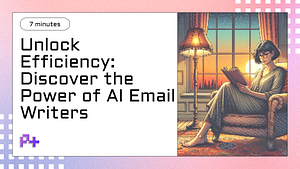1. What is Lead Enrichment and Why is it Important?
Lead enrichment is the process of enhancing the quality and depth of information associated with potential customers, or leads, in a business’s database. This involves gathering additional data points about these leads, such as their company size, industry, location, social media profiles, and interaction history. By enriching lead data, businesses can develop a more comprehensive understanding of their prospects, allowing for more personalized and effective marketing strategies. The goal of lead enrichment is to transform raw leads into actionable insights that sales teams can use to increase conversion rates and drive revenue growth.
The importance of lead enrichment cannot be overstated, especially in today’s competitive business landscape. With a wealth of information available, companies can utilize lead enrichment to segment their audience more accurately, identify high-value prospects, and tailor their outreach efforts accordingly. This targeted approach ensures that marketing campaigns resonate with specific customer needs and pain points, leading to higher engagement levels. Furthermore, enriched leads can help sales teams prioritize their efforts, focusing on the prospects most likely to convert, thereby maximizing efficiency and productivity.
In addition to enhancing marketing and sales strategies, lead enrichment plays a vital role in improving customer relationships. With better insights into a leads background and preferences, businesses can engage in meaningful conversations and provide relevant solutions that align with the customers needs. This personalized engagement fosters trust and rapport, which are crucial for nurturing leads through the sales funnel. Ultimately, investing in lead enrichment not only boosts conversion rates but also contributes to long-term customer loyalty and satisfaction, making it a critical component of effective business growth strategies.
2. Types of Lead Enrichment Data You Should Consider
Lead enrichment is a crucial process that enhances your sales and marketing efforts by providing additional information about your leads. To effectively improve your lead quality, its essential to consider various types of lead enrichment data. This data can be categorized into several key areas: demographic data, behavioral data, and firmographic data. Each type serves a unique purpose and can significantly impact your ability to convert leads into customers.
Demographic data includes essential information about individual leads, such as age, gender, income level, and education. This data helps you build a detailed profile of your potential customers, allowing you to tailor your marketing strategies to their specific needs and preferences. For instance, knowing the age range of your leads can help you craft messages that resonate more effectively, increasing engagement rates. Additionally, demographic insights enable segmentation, allowing for personalized outreach that can lead to higher conversion rates.
Behavioral data, on the other hand, focuses on how leads interact with your brand. This includes tracking website visits, email open rates, social media engagement, and purchase history. By analyzing this data, you can gain valuable insights into the interests and preferences of your leads, allowing you to predict future behavior. For example, if a lead frequently visits a specific product page but hasn’t made a purchase, targeted follow-up communications can be crafted to encourage conversion. Understanding these behavioral patterns is vital for developing effective lead nurturing strategies and optimizing your sales funnel.
Lastly, firmographic data pertains to the characteristics of a company when dealing with B2B leads. This includes information such as company size, industry, revenue, and location. By leveraging firmographic data, businesses can identify high-value leads that align with their target market. This data is particularly useful for creating targeted marketing campaigns and identifying potential partnerships. By considering all these types of lead enrichment data—demographic, behavioral, and firmographic—you can create a comprehensive view of your leads, ensuring that your sales strategies are data-driven and aligned with your prospects needs.
3. Benefits of Lead Enrichment for B2B Marketing
Lead enrichment is a crucial process in B2B marketing that enhances the quality and effectiveness of your lead generation efforts. By gathering additional data on potential customers, businesses can create a more comprehensive profile of their target audience. This enriched data often includes information such as company size, industry, job titles, and even social media activity. The primary benefit of lead enrichment is that it allows marketers to segment their leads more effectively, tailoring their messaging and outreach strategies to align with the specific needs and pain points of different segments. This targeted approach not only increases the likelihood of engagement but also boosts conversion rates, leading to more successful marketing campaigns.
Another significant advantage of lead enrichment is the improvement of sales alignment. When marketing teams have access to enriched lead data, they can provide sales teams with highly relevant insights that inform their outreach strategies. For instance, understanding the decision-making hierarchy within a company can help sales representatives identify whom to approach and how to frame their pitches. This alignment between marketing and sales is essential for maximizing efficiency and ensuring that both teams work towards common goals. By leveraging enriched leads, businesses can accelerate their sales cycles and enhance their overall revenue potential.
Finally, lead enrichment plays a vital role in nurturing leads throughout the buyer’s journey. As prospects engage with your content, their interests and needs may evolve. By continuously updating lead profiles with new information, businesses can maintain a dynamic understanding of their audience. This ongoing enrichment enables marketers to provide personalized experiences, such as targeted email campaigns or tailored content recommendations, that resonate with leads at each stage of their journey. Ultimately, this leads to higher customer satisfaction and loyalty, as businesses demonstrate their commitment to understanding and meeting the needs of their prospects. In summary, the benefits of lead enrichment for B2B marketing are multifaceted, encompassing improved segmentation, enhanced sales alignment, and effective lead nurturing.
4. How to Automate Lead Enrichment: A Step-by-Step Guide
Automating lead enrichment can significantly enhance your marketing and sales efforts by providing deeper insights into potential customers. The process begins with the selection of the right tools and platforms tailored to your business needs. Start by researching various lead enrichment software options, such as Clearbit, ZoomInfo, or HubSpot, which offer APIs that integrate seamlessly with your existing Customer Relationship Management (CRM) system. These tools can automatically populate missing data fields with relevant information, such as company size, industry, and social media profiles, thereby enriching your leads with minimal manual intervention.
Once you’ve chosen your preferred lead enrichment tool, the next step is to set up the integration with your CRM. Most tools offer user-friendly interfaces that guide you through the setup process. This typically involves connecting your CRM account, configuring the data fields you want to enrich, and establishing rules for data updates. For instance, you can decide whether to overwrite existing data with new information or keep the original details for reference. Ensuring that your lead data is cleaned and deduplicated beforehand will also streamline the enrichment process, allowing for more accurate and reliable results.
After integration, it’s crucial to monitor and optimize the lead enrichment process continuously. Regularly review the enriched data for accuracy and relevance, and adjust your settings or sources as necessary. Additionally, consider implementing a feedback loop where your sales team can report on the quality of the enriched leads, which can help refine your criteria and improve the automation process. By following these steps, you can successfully automate lead enrichment, allowing your team to focus on nurturing relationships with prospects rather than spending time on manual data entry. This not only increases efficiency but also enhances the quality of your leads, ultimately driving better conversion rates.
5. Top Tools for Effective Lead Enrichment
When it comes to lead enrichment, selecting the right tools can significantly enhance your sales and marketing efforts. Lead enrichment involves augmenting your existing lead data with additional information to create a more comprehensive view of potential customers. This process helps businesses tailor their outreach strategies, improve targeting, and ultimately boost conversion rates. Here are some top tools that can help streamline and optimize your lead enrichment process.
One of the leading tools in the market is ZoomInfo, renowned for its extensive database of business contacts and companies. ZoomInfo offers advanced search capabilities, allowing users to filter leads based on various criteria, such as industry, company size, and geographic location. This tool not only enriches lead information with accurate data but also provides insights into organizational charts and buying signals, empowering sales teams to prioritize their efforts effectively. Another excellent option is Clearbit, which specializes in real-time data enrichment. Clearbit integrates seamlessly with popular CRMs and marketing automation platforms, enabling businesses to automatically enrich lead profiles as soon as they enter the system. This real-time capability ensures that sales teams have the most up-to-date information at their fingertips, improving their chances of engagement.
For those looking for a more cost-effective solution, HubSpot offers a robust lead enrichment feature within its CRM platform. HubSpot’s lead enrichment tools utilize information from public databases and social media profiles to fill in gaps in lead data. This not only saves time but also enhances the quality of leads by providing additional context, such as company revenue, employee count, and social media presence. Additionally, tools like LinkedIn Sales Navigator can be invaluable for lead enrichment, as they provide access to a wealth of professional data and insights. By leveraging these tools, businesses can significantly improve their lead enrichment efforts, resulting in more informed decision-making and increased sales performance.


